Last updated: August 2, 2024
Article
When Wildfire Makes the Forest Understory the Star
Life on the forest floor is diverse, verdant, and plays a supporting role to the larger, flashier celebrities of the forest—its mature trees. But what happens when the trees don’t come back after fire?
By Nathan G. Kiel and Monica G. Turner
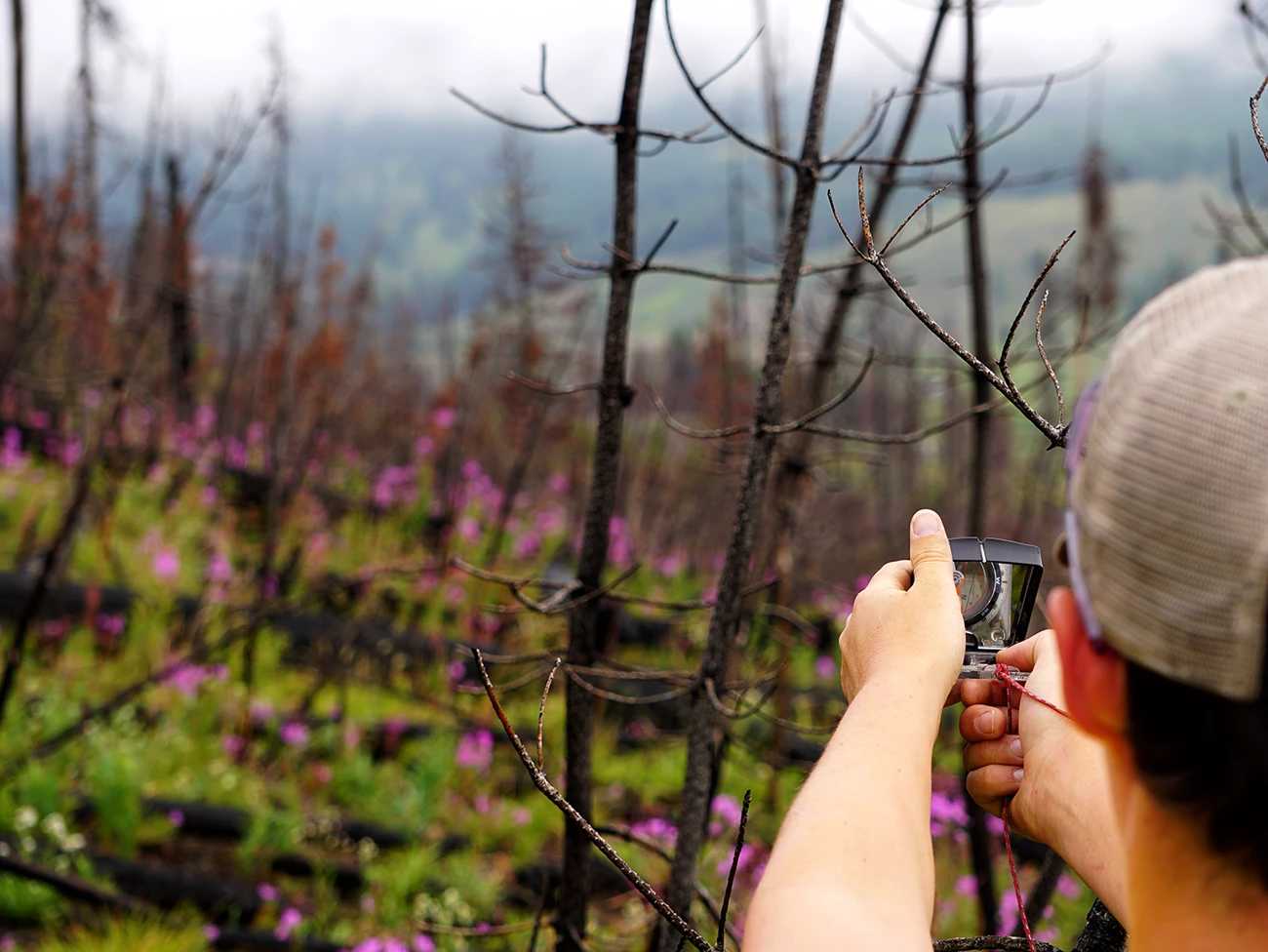
Image credit: NPS / Nathan Kiel
It was mid-morning on a clear July day in 2021. The sun was already blazing hot as we wandered through a colorful subalpine meadow—the area below the tree line—in Grand Teton National Park.
Bill Romme, a retired professor of fire ecology at Colorado State University and my (Turner's) long-time collaborator, was with us. The diversity of wildflowers and grasses around us was impressive. As we walked, though, it was easy to trip over the numerous tiny stumps hiding under the foliage, poking up from the soil like pencil points. Though inconspicuous, those remains of young trees spoke volumes. That hot, sunny meadow was recently a forest of young lodgepole pine trees. But few tree seedlings had established since the 2016 Berry Fire, and the forest likely wouldn’t come back anytime soon. Standing in that meadow, we wondered: were we looking at the future of Grand Teton’s forests? Through scientific research, we’re hoping to answer that question.
Shaped by Fire
Yellowstone and Grand Teton National Parks sit at the center of the Greater Yellowstone Ecosystem, one of the largest temperate-climate ecosystems on the planet. Forested plateaus gently undulate across much of Yellowstone’s 2.2 million acres. Just to the south, Grand Teton National Park boasts a stunning, forest-clad mountain range of serrated peaks that rise to over 12,000 feet. Along with their scenic beauty, the forests in these two parks have another important thing in common: they are shaped by wildfire.
Decades of research have since taught us that even such large, severe wildfires aren't necessarily ecological catastrophes.
High-severity (i.e., stand-replacing) wildfires have burned subalpine forests in Greater Yellowstone since the glaciers receded more than ten thousand years ago. Historically, they occurred every one to three centuries during very hot and dry summers. When a wildfire comes, it can be shocking. The historic 1988 wildfires were particularly notable for their size and severity, burning nearly one-third of Yellowstone and corners of adjacent Grand Teton National Park and national forests. Advancing fronts of flame were driven by winds in excess of 60 miles per hour, charring trees and consuming their needles and twigs. Lush green forests were instantly replaced by a wooden colonnade of standing dead snags.
But decades of research have since taught us that even such large, severe wildfires aren't necessarily ecological catastrophes. The forests of Greater Yellowstone are adapted to wildfire. Lodgepole pine, a fast-growing evergreen tree, dominates much of Grand Teton and Yellowstone’s forests. Some varieties have serotinous cones, a unique adaptation to fire. These cones remain sealed by resin, and their trees store more and more seeds each year. When heated by fire, the cones open and shed their seeds onto the blackened soil, an ideal seedbed in which to establish.
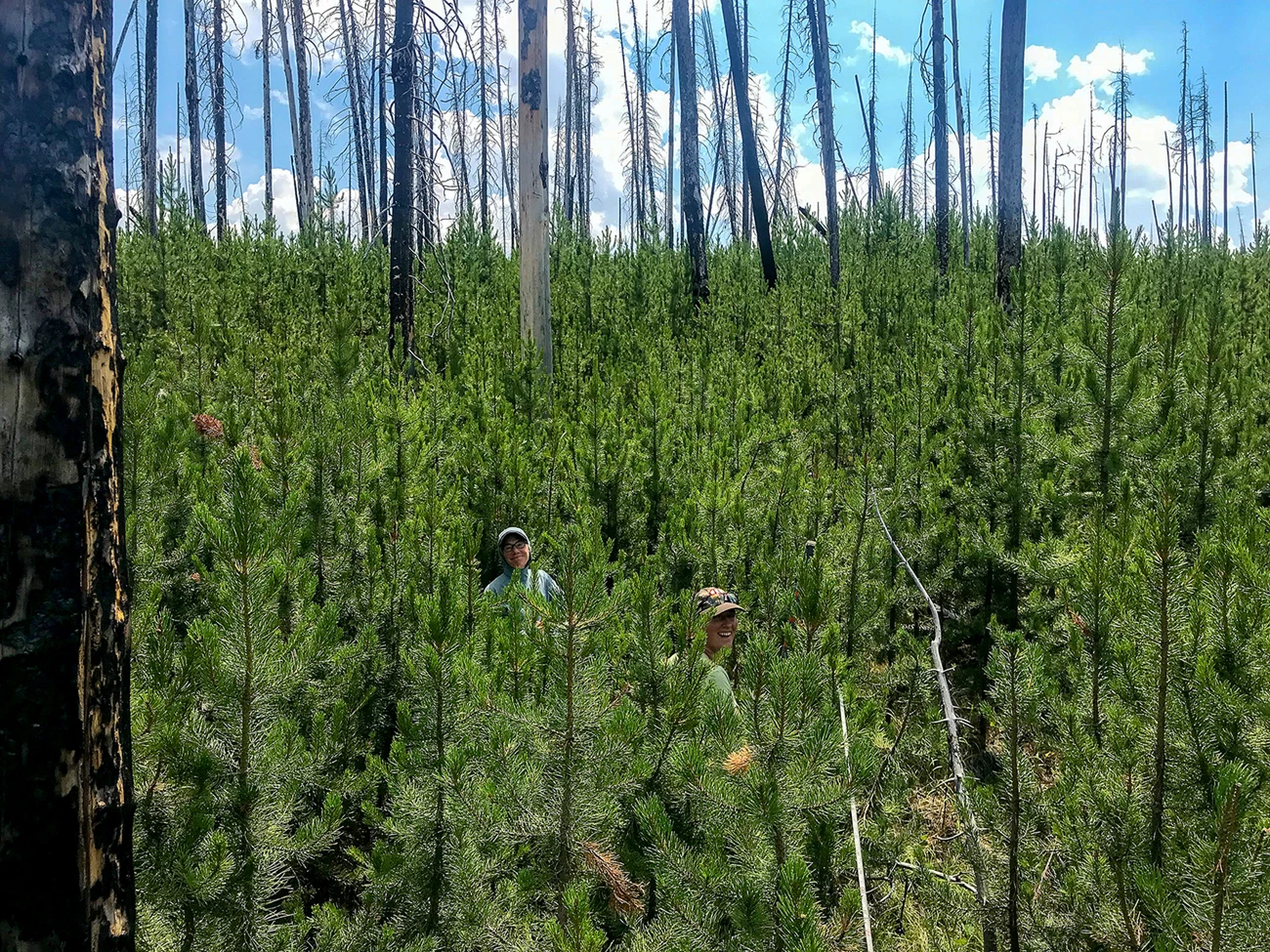
Image credit: NPS / Nathan Kiel
With abundant sunlight and moisture, these pine seedlings grow and quickly rejuvenate the forest. Wind brings the seeds of other conifers, and after a decade or two, most signs of the fire aren’t even visible to visitors. Those cycles of wildfire and recovery have occurred for thousands of years. But as the climate warms and fires become more frequent, will forests still recover? And if a forest doesn’t come back, what do we get instead?
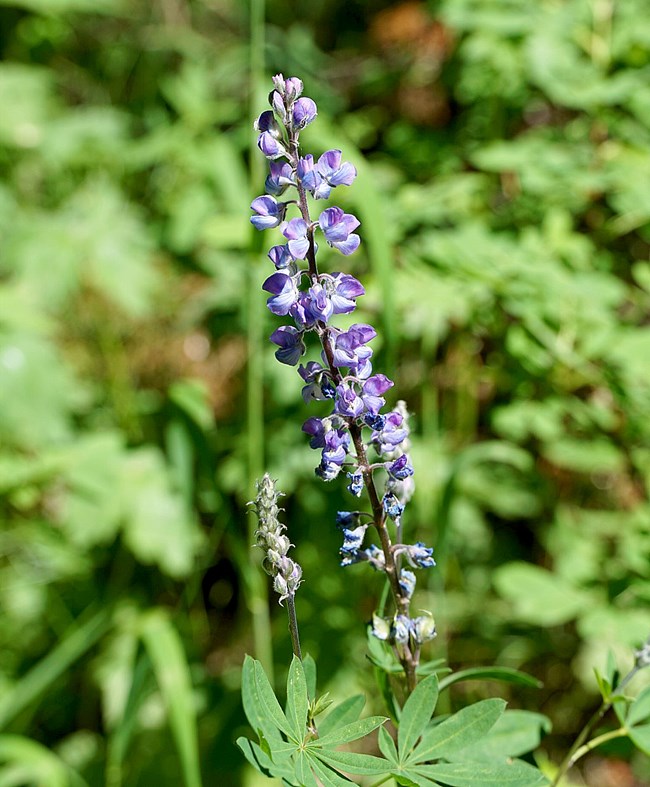
Image credit: NPS / Nathan Kiel
The Understory
The remarkable recovery of most Greater Yellowstone forests after the 1988 fires taught scientists a lot about the important role wildfire plays in natural systems. But there’s more to a forest than its trees. In almost all North American forests, most plant diversity is found in the understory—the plant community on the forest floor, underneath the tree canopy. In Greater Yellowstone, any given forest might contain fewer than 10 tree species but dozens of species of understory flowers, grasses, and shrubs.
Fire can kill trees, but many understory plants are perennials that survive fire. Even when their aboveground stems and leaves are combusted, their roots and other underground parts survive because fires don't burn deeply into the soil. A few years after a fire, the understory will be verdant once again. “So much of the herbaceous plants you see out here are not seedlings,” said Romme. “They’re things that were here before the fire.”
Understory plants have important ecological roles. “They’re not just a bunch of window dressing under trees.”
Apart from their resistance to fire, understory plants also have important ecological roles. “They’re not just a bunch of window dressing under trees,” said Diane Abendroth, a fire planner with the National Park Service. “Those are really remarkable, beautiful communities that are habitat for…the flowers and…insects and…shrubs [that] visitors…come to see.”
We wanted to know how those diverse understory plant communities were responding to climate change. In doing so, we hoped to gain some insight into what the forests of Greater Yellowstone might look like in years to come.
An Urgent Need
National parks are ideal living laboratories for conducting scientific research. Unplanned, natural “experiments" like large wildfires provide valuable opportunities for study. And the need for this kind of work has never been more urgent. Climate change is making hot, dry summers more frequent and raising the risk of wildfires. After 2050, most years could see large wildfires such as we saw in 1988. As a result, swaths of forest may be lost by the end of this century. “In a warmer world,” said Paul Hood, a fire ecologist with Grand Teton, “there may be a point at which there is too much fire.”
Many young lodgepole pine trees that burned weren’t old enough to have serotinous cones to provide seeds.
The year 2016 was the biggest wildfire year in Yellowstone and Grand Teton since 1988. The blazes tore through young forests still recovering from previous fires. That was evident in the meadow we explored in 2021. The wildfires had burned so severely that young trees went completely up in smoke, with nothing left but fist-sized stumps. Research showed that forests didn’t recover nearly as well as after previous, long-interval fires. Many young lodgepole pine trees that burned weren’t old enough to have serotinous cones to provide seeds. And the surrounding forest that didn’t burn was filled with short, immature (non-seed-producing) trees. But what happened to the understory plants in the forest?
Portents of Change
In 2021, we studied understory plant communities in areas that burned twice in the last 30 years, including some after the Berry Fire. We compared these plant communities to those that burned in the same fire but hadn’t burned previously for more than 125 years. To assess the number and variety of plants, we systematically placed square frames, measuring about 20 by 20 inches, made of PVC pipes to mark quadrats throughout our study plots. We measured the relative amounts of each species of grass, flower, and shrub inside each frame. This allowed us to estimate those quantities for the entire plot. Our data set covered 62 plots (for a total of 1,550 quadrats) distributed across Yellowstone and Grand Teton, and was bolstered with previous measurements. Our final data set covered 38 acres—about the size of 29 football fields.
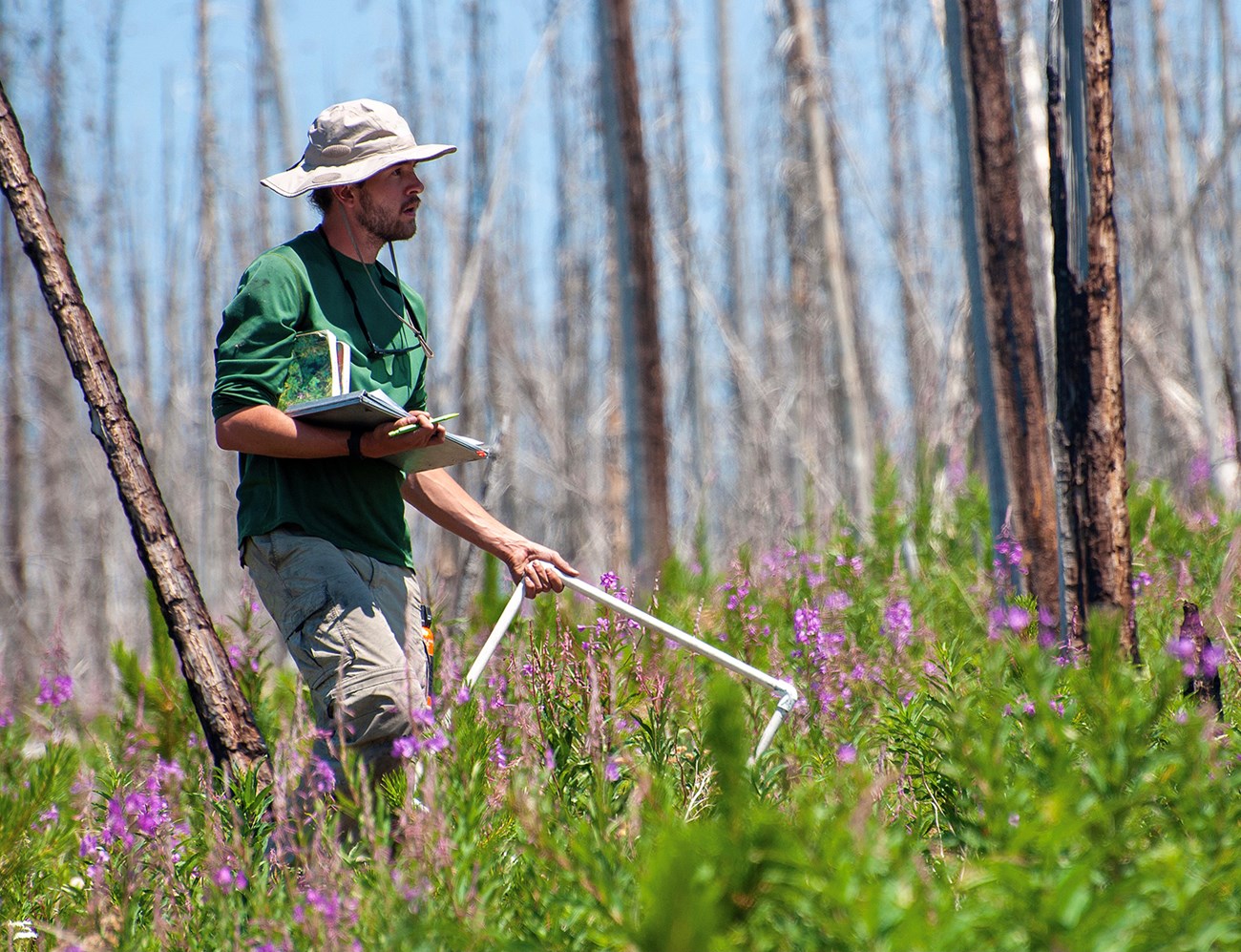
Image credit: NPS / Timon Keller
Although lodgepole pine trees’ serotinous cones led to rapid forest recovery across much of the 1988 burn scar, about 16 percent of the burned area hadn’t come back as forest. These forests were dominated by spruce, fir, and non-serotinous lodgepole pines, so seedling establishment depended on seeds dispersed from mature, living trees surrounding the burn scar. In 2022, we visited those locations, many of which were in remote, large burn patches at high elevations. We used the same sampling design as in 2021 to study the understory plant communities across 55 plots in Yellowstone and neighboring national forests. To do so, I (Kiel) and my field team hiked 153 miles across much of Greater Yellowstone and identified 133 different plant species along the way.
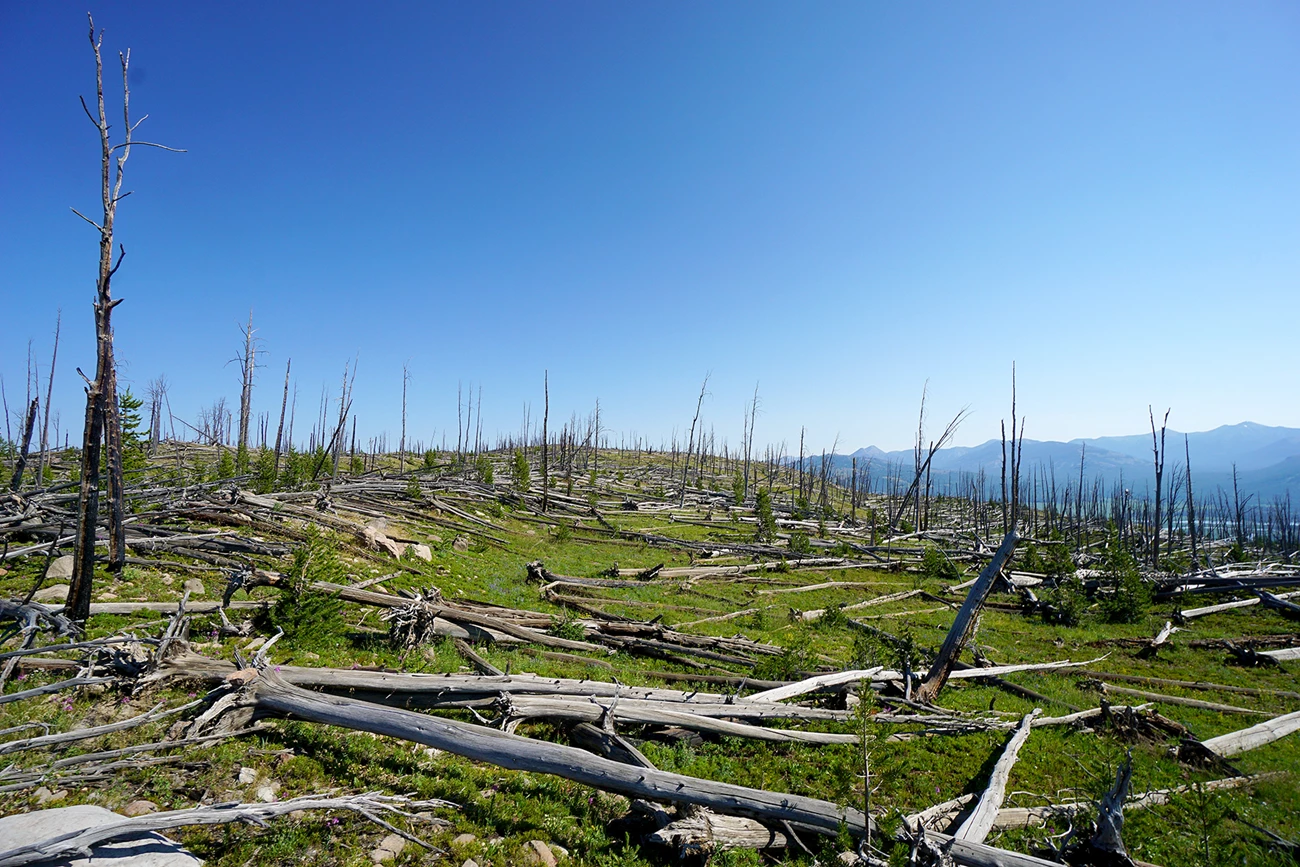
Image credit: NPS / Nathan Kiel
After analyzing the data we collected in 2021 and 2022, we found understory communities showed signs of resilience and adaptation to changing climate and wildfires. These shade-tolerant plants persisted despite stress from more sunlight owing to sparse tree regeneration and from warmer, drier soils after short-interval fires. Native perennials fared well because of their ability to resprout and rapidly recover. Some even increased in abundance, like silvery lupine and elk sedge. Plant communities also remained diverse and generally resistant to invasion from non-native species like Canada thistle and yellow toadflax.
But plant communities also showed signs of change. In places where trees hadn’t recovered following the 1988 fires, plant species common to meadows and grasslands, like sticky geranium and alpine bluegrass, were more abundant. Following short-interval wildfires, plant communities had more species adapted to drier, sunnier conditions. They also had more species usually found at warmer, drier, lower elevations, so these species may have migrated upslope as the climate warmed. We also discovered a noxious invader, cheatgrass, where the 2016 Maple Fire burned after the 1988 North Fork Fire. Wildfire can encourage the spread of cheatgrass in Greater Yellowstone, so this served as a warning to remain vigilant for non-native, invasive plants in the face of changing fire regimes.
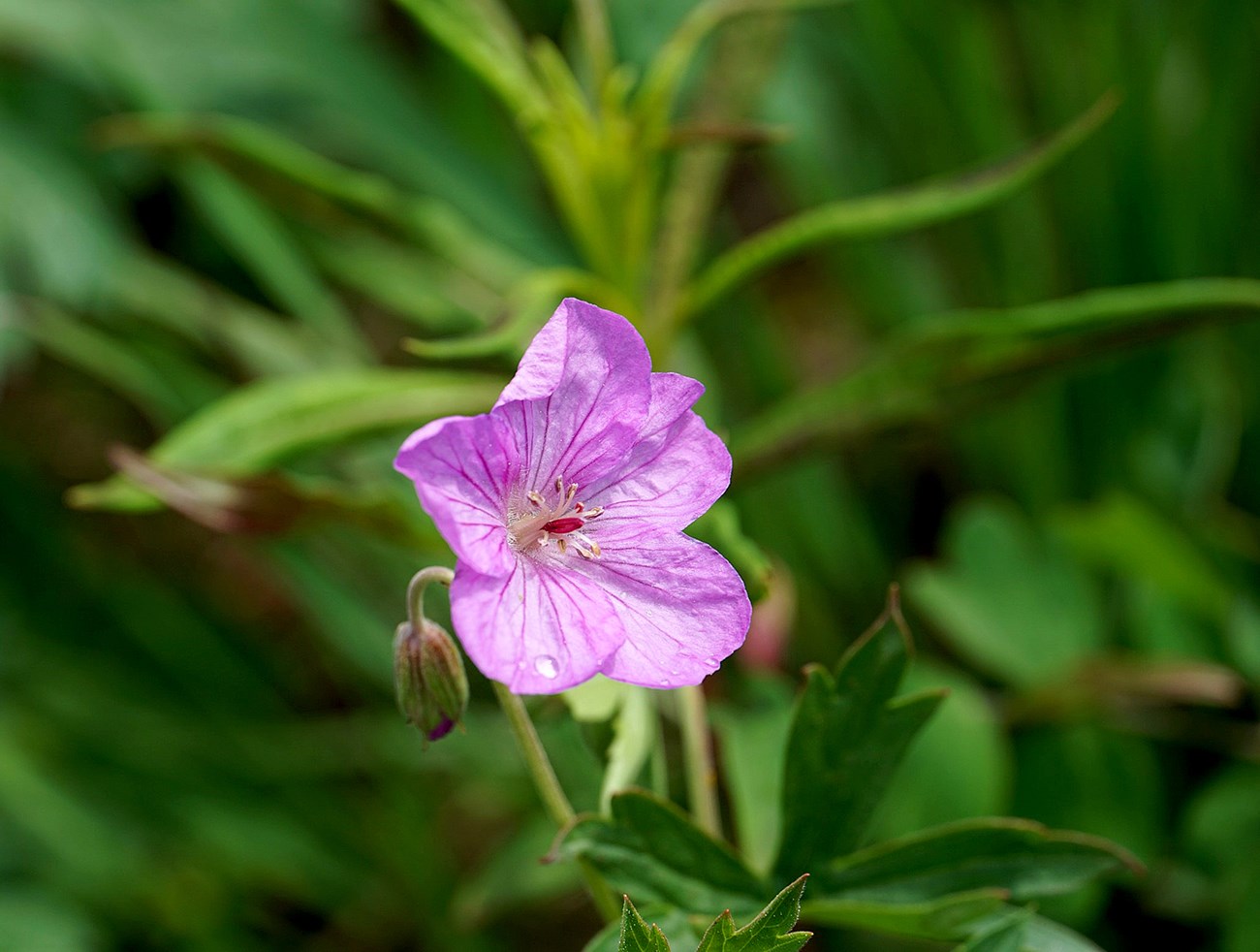
Image credit: NPS / Nathan Kiel
Those high-elevation sites may portend the future consequences of climate change for plant communities.
Despite general trends, not all plant communities changed in the same way. Those in historically snowy areas at higher elevations appeared most vulnerable. This was surprising, because plants that prefer the cold can thrive with modest warming. But our data suggest that plant communities adapted to cool, wet conditions may change as the growing season gets longer and warmer. Annual snowfall has already declined by 3.5 inches per decade in Yellowstone since 1950, so the blankets of snow that buffered plant communities from climate change are shrinking. Those high-elevation sites may portend the future consequences of climate change for plant communities.
Scientists expect wildfires to be larger and more frequent as the climate continues to warm. Studies like ours of understory communities help land managers understand how forests are responding to these stressors. Becky Smith is a National Park Service fire planner who works in the northern Rocky Mountains. “We’re doing monitoring, and you’re doing research,” Smith told us. “While there is a difference between monitoring and research, they’re both really important.” Smith thinks studies like ours give fire planners and others who manage public lands “an idea of where we may be going with climate change.” This is important, Abendroth adds, because “we need to know as much as we can about what the environment will be in the future” and “we are running out of time to act.”
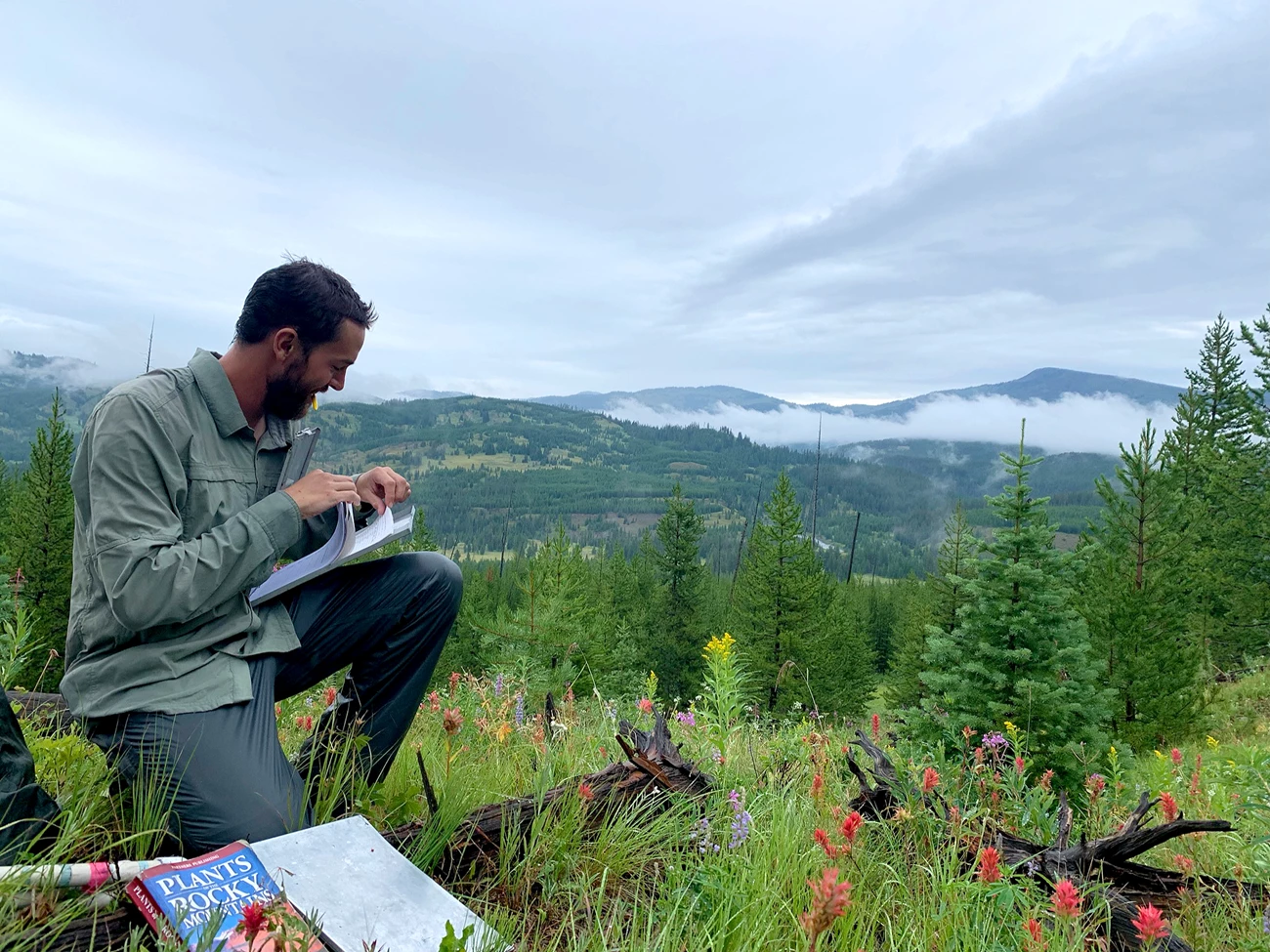
Image credit: NPS / Eileen Mavencamp
Learning from Nature
Bill Romme's early research on Yellowstone’s fire history gave scientists the background for interpreting the momentous 1988 fires in a historical context. The long-term studies after 1988 that Romme and I (Turner) led are benchmarks for evaluating forest responses as climate and fire regimes change. The meadow we explored on that hot July day in 2021 was a notable contrast to what we'd seen after many previous fires. Whether forests recover will have cascading implications for wildlife, for future wildland fires, and for the scenic vistas we know and love.
Plant communities where forests aren’t coming back may be better adjusted to the warmer, drier future we are likely to see than the forests that came before them.
Dwindling forests will also affect park visitors and gateway communities. Abendroth told us people who recreate in national parks want to know whether there’s going to be shade on a hot July or August day. She said forest loss “could really change the kind of visitor experience” the parks provide. But nature adapts, and change isn’t inherently bad. Those Greater Yellowstone plant communities where forests aren’t coming back may be better adjusted to the warmer, drier future we are likely to see than the forests that came before them. Scientific work like ours will be crucial for understanding how to steward these precious resources in a time of unprecedented change. And it will also help parks and communities develop effective strategies for adapting to a future with more wildfires.


